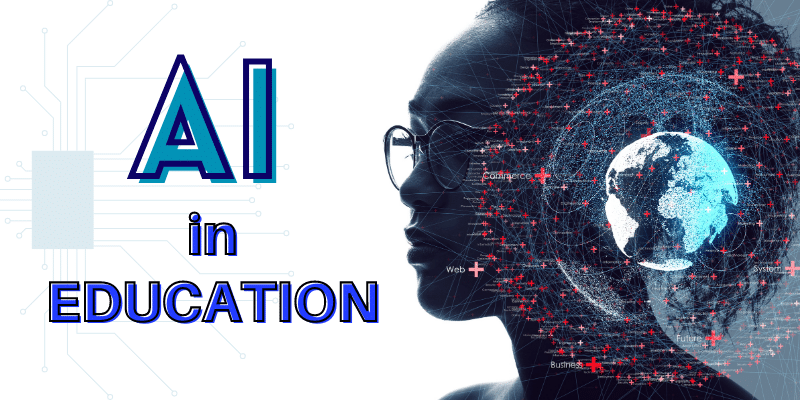Artificial intelligence (AI) is quickly becoming a necessary component of modern society. It impacts and influences how we communicate, work, and live.
It has greatly transformed the field of learning and teaching. The creation of computer systems with artificial intelligence (AI) enables them to do activities that would typically need human intelligence.
Over time, these systems may evolve and adapt to deliver advanced results. It also hasn’t failed and has helped to improve student learning, personalize instruction, and implement administrative duties.
The Benefits of AI Implementation in Education
Numerous studies and research projects have focused on using AI in teaching. These research findings have demonstrated that AI can positively impact pupils and teachers.

According to the Bill & Melinda Foundation research, using adaptive learning software can raise student accomplishment by as much as 30%.
In addition, according to another study from Carnegie Mellon University, intelligent tutoring systems have been found to enhance student learning.
Personalized Education
Artificial intelligence-based systems may analyze students’ learning patterns, strengths, and limitations and design personalized learning routes.
AI algorithms are used by adaptive learning software to analyze student performance data and deliver individualized feedback and training according to each student’s needs.
This individualized method can raise student motivation, engagement, and achievement. It allows students to learn at their own pace and in their way, resulting in increased academic performance.
Adaptive Learning
Research indicates that AI can close the achievement gap between pupils from various socioeconomic backgrounds.
Regardless of their socioeconomic background, pupils who utilized an adaptive learning system improved their academic performance more than those who did not.
Adaptive learning platforms powered by AI can automatically modify the difficulty level of questions based on student responses.
This method assists students in focusing on areas where they need to develop and advance their learning.
Gamification
AI-powered educational games and simulations make learning enjoyable and engaging, encouraging active involvement and excellent information retention.
Currently, AI systems have been effectively implemented in various levels of education. This covers the Lower, Middle, and Higher Education levels.
Virtual Personal Assistants
With the help of virtual assistants and AI-powered chatbots, teachers may now assist students around the clock and respond to their inquiries, increasing accessibility and flexibility in the classroom.
Chatbots, AI-powered virtual assistants, may answer students’ questions and provide real-time support. This method reduces teachers’ burdens while improving students’ learning experiences.
With AI-powered writing tools such as Grammarly and QuillBot, virtual assistants, and chatbots, support is available 24/7, thereby improving accessibility and flexibility both in teaching and learning.
Feedback and Grading
AI-powered systems can grade projects, essays, and tests quickly and accurately, providing students with immediate feedback.
This method saves teachers time while also assisting students in improving their writing and critical thinking skills.
How to Use AI in Learning
It is important to understand AI’s abilities and limitations.
Understand AI and all it entails
First, educators should comprehensively understand what AI can and cannot do.
Then, they can use this to select the best AI tools and applications for their requirements. Implementing AI in education can be overwhelming, so start simple.
Use one or two AI-powered tools in the classroom to begin, and as your needs change, add more.
Instruct instructors on using tools and applications driven by AI in the classroom. This will facilitate the integration of AI.
Engage pupils in the activity

Ask your pupils for their opinions on using AI tools and applications in the classroom. This will assist educators in finding any problems and making corrections.
Give them assignments if they actually understand the concept of AI in their learning and give the necessary corrections too.
Assessing and tracking student progress
Monitor student progress frequently to ensure that the AI-powered tools and applications successfully enhance student learning outcomes.
Artificial intelligence transforms how we learn and teach, making education more personalized, engaging, and successful.

